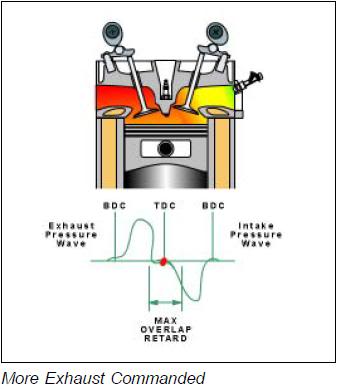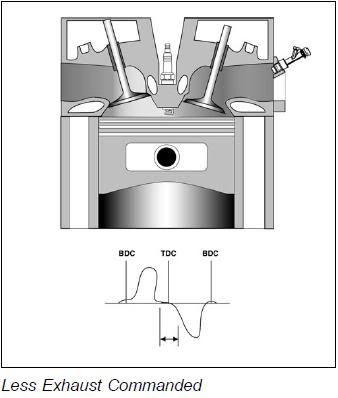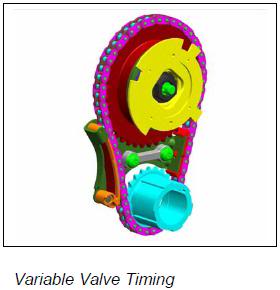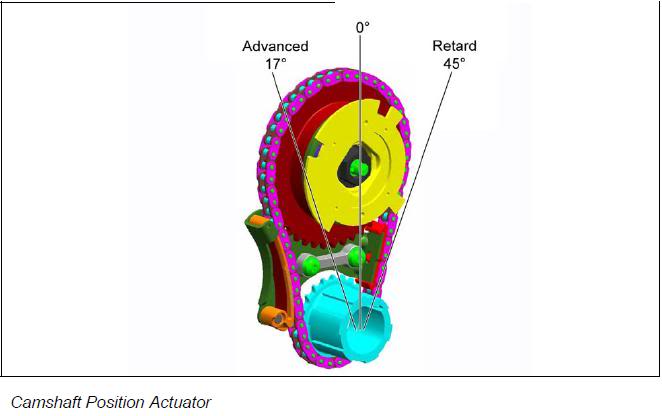VVT Tuning.....
#11
TECH Fanatic
iTrader: (2)
So you're retarding the cam an extra degree above 5500? I have yet to mess with the upper end of the VVT table, but have decreased the amount of retard in the midrange by about half, and so far don't have any issues. You should be able to pick up some midrange tq gains by doing this. I also tamed down the corresponding VVT spark tables a bit, due to the now higher cylinder pressure.
#12
TECH Fanatic
iTrader: (2)
Has anyone compared the new 6.2 with a VVT cam and one without? The VVT seems like it's trying to accomplish the best of both worlds (performance and fuel economy). Could you get better performance from a CAM that removes the VVT? Still trying to read up on it but that's kinda gathered about it so far.
Still new to this so if I am way off base I am open for the more experienced thoughts.
Still new to this so if I am way off base I am open for the more experienced thoughts.
The following users liked this post:
Mark Johnson (05-23-2019)
#13
FormerVendor
iTrader: (4)
Retaining the VVT system will give you more power down low and more power up top, when compared to a non VVT setup...Advance the cam a bit down low and retard it a bit up top, and you will usually make more power. The key is finding out how much advance/retard works the best. The simplest way to start would be using engine sim software, and plug in different intake centerlines, to see how it moves the power around. Just have to be careful when installing an aftermarket cam, to be sure that there is no way the valves will hit the piston, regardless of the cam phaser position.
Camshaft Position Actuator System Benefits
- Increased horsepower and torque
- Improved gas mileage
- Improved emissions
- Eliminates external EGR system
Valve overlap is the period when both the intake and the exhaust valve are open at the same time. With the exhaust valve closing delayed, the low intake manifold pressure (50-70 kpa) and exhaust back pressure cause exhaust gas to be drawn back into the combustion chamber.

When exhaust gas recirculation is not desired, the Camshaft Position Actuator System would advance the exhaust valve closing to 0 degrees. With the exhaust valve timing advance back to 0 degrees low engine speed operation is improved, most notably idle quality and throttle response. Advancing the exhaust valve closing reduces low speed lobe caused by valve overlap.

Variable Valve Timing
The camshaft position actuator used on the LY6, L76 and L92 engines is a vanetype actuator. This camshaft position actuator incorporates a 4x camshaft reluctor wheel. This camshaft position actuator has 60 degrees of crankshaft authority. This camshaft position actuator is in the home position when the actuator is fully advanced. This camshaft position actuator has 17 crank degrees of advance and 43 crank degrees of retard.


The following users liked this post:
Mark Johnson (05-23-2019)
#14
TECH Fanatic
iTrader: (2)
We've all seen those diagrams from GM before. I'm fully aware of why they decided to implement cam phasing on these motors, and yes, the main reason was emissions, but it's not the ONLY reason. It does allow them to use a smaller cam, and still get decent peak power, by retarding all of the valve events up top.
I couldn't care less about the emissions/mileage benefit of the VVT system, but there are still other benefits to using it, even with an aftermarket cam.
#15
FormerVendor
iTrader: (4)
So what exactly do you disagree with? That moving the ICL on the cam affects how/where the power comes on? That advancing the cam will bring the power on early, but fall off earlier. That retarding it allows better peak power?
We've all seen those diagrams from GM before. I'm fully aware of why they decided to implement cam phasing on these motors, and yes, the main reason was emissions, but it's not the ONLY reason. It does allow them to use a smaller cam, and still get decent peak power, by retarding all of the valve events up top.
I couldn't care less about the emissions/mileage benefit of the VVT system, but there are still other benefits to using it, even with an aftermarket cam.
We've all seen those diagrams from GM before. I'm fully aware of why they decided to implement cam phasing on these motors, and yes, the main reason was emissions, but it's not the ONLY reason. It does allow them to use a smaller cam, and still get decent peak power, by retarding all of the valve events up top.
I couldn't care less about the emissions/mileage benefit of the VVT system, but there are still other benefits to using it, even with an aftermarket cam.
A VVT engine will not out perform a non VVT engine on a dyno.
I have read several articles from cam manufactures that state the gains from VVT. The minimal gains are minor compared to the overall lose. I was schooled on VVT cams a few years back. I was under the impression you got the best of both sides. Thats just not they way it works. I have a feeling it was Greg Bannish that schooled me, but it might have been one of his proteges. I was dirrected to several articles.
If you put in a non VVT cam you will have more torque and horsepower. You just need to look at the big picture. Even with a VVT cam if you limit it you can gain. Yes you will lose also, but if you have mods then it could be a wash.
What happens if you have a higher stall converter? You can still PWM the converter to drop the RPM's down to a target. You still have the increased torque multiplier in the converter.
Monitor the Displayed Torque and HP on a datalog. Take a look at the numbers on a given trip.
#17
TECH Fanatic
iTrader: (2)
I feel the reason for the VVT is to control Combustion Chamber Temperature.
A VVT engine will not out perform a non VVT engine on a dyno.
I have read several articles from cam manufactures that state the gains from VVT. The minimal gains are minor compared to the overall lose. I was schooled on VVT cams a few years back. I was under the impression you got the best of both sides. Thats just not they way it works. I have a feeling it was Greg Bannish that schooled me, but it might have been one of his proteges. I was dirrected to several articles.
If you put in a non VVT cam you will have more torque and horsepower. You just need to look at the big picture. Even with a VVT cam if you limit it you can gain. Yes you will lose also, but if you have mods then it could be a wash.
What happens if you have a higher stall converter? You can still PWM the converter to drop the RPM's down to a target. You still have the increased torque multiplier in the converter.
Monitor the Displayed Torque and HP on a datalog. Take a look at the numbers on a given trip.
A VVT engine will not out perform a non VVT engine on a dyno.
I have read several articles from cam manufactures that state the gains from VVT. The minimal gains are minor compared to the overall lose. I was schooled on VVT cams a few years back. I was under the impression you got the best of both sides. Thats just not they way it works. I have a feeling it was Greg Bannish that schooled me, but it might have been one of his proteges. I was dirrected to several articles.
If you put in a non VVT cam you will have more torque and horsepower. You just need to look at the big picture. Even with a VVT cam if you limit it you can gain. Yes you will lose also, but if you have mods then it could be a wash.
What happens if you have a higher stall converter? You can still PWM the converter to drop the RPM's down to a target. You still have the increased torque multiplier in the converter.
Monitor the Displayed Torque and HP on a datalog. Take a look at the numbers on a given trip.
This isn't VVT specific information...If you take a given cam and advance it by 4* from stright up, for example, it will pickup a bit of power below peak torque, but peak hp will be down. If you then retard it 4* from stright up, it will pickup power past peak torque. It is as simple as that. You might as well use the VVT system to do it, even if you only gain 10hp on the top end. You don't need some "special" VVT cam, it just has to have the proper amount of advance ground into it, to work with the cam phaser being used.
Bottom line is, if you know how to properly spec a cam grind, and tune it's VVT tables, the motor WILL absolutely make more overall power. It just isn't a disputable issue.
#20
9 Second Club
iTrader: (7)
How does an l99 camaro with 26 less flywheel HP and less flywheel tq at peak, run the and times stock as a ls3 m6 car. Effective gearing comparable, ls3 car is lighter. All else the same. It has a more aggresive cam and more compression. My guess would be because of average power, not peak.

